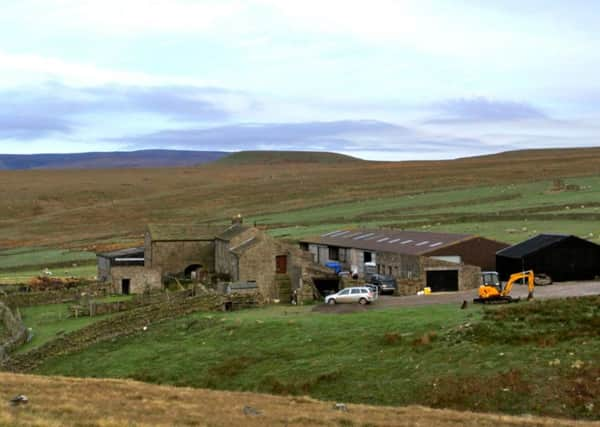Livestock grazing ‘vital’ to preserve uplands


Abandoning grazing on upland environments, which include the Yorkshire Dales and the North York Moors, would be “incredibly damaging”, researchers found, as it would disrupt important plant and bird communities that rely on each other to survive.
The first long-term study of its kind, which was carried out by ecologists at the Universities of Hull, Aberdeen and the James Hutton Institute, looked at the consequences of different grazing scenarios on multiple plant and animal groups, which consume each other in an upland “food web”.
Advertisement
Hide AdAdvertisement
Hide AdThe research, which is published today, was carried out on experimental plots on the Glen Finglas estate in central Scotland between 2002 and 2012.
Researchers measured plant diversity, insect abundance, the territories of meadow pipits - a common upland songbird which is food for merlins and hen harriers - as well as recording signs of vole and fox activity on each plot.
The ecologists concluded that low-intensive, mixed-livestock grazing provided the best results.
Dr Darren Evans, a Senior Lecturer in Conservation Biology at the University of Hull, said: “It might be tempting to think that the most beneficial approach would be to stop grazing altogether in these upland areas, but actually that would be incredibly damaging in terms of conservation.
Advertisement
Hide AdAdvertisement
Hide Ad“These unique habitats have evolved as a result of traditional farming practices, and abandoning such areas would have a huge impact on the international important plants and animals that live there.”
Moderate numbers of sheep and cattle were especially beneficial for meadow pipits probably because they opened up areas of grassland for insects which they feed on.
Voles need a lot of vegetation and intensive grazing led to a decrease in the species, which then had a knock on for fox numbers.
Dr Evans said in the past the onus had been on improving grassland and maximising the number of sheep, and added: “We are actually saying if you want to maximise biodiversity, it’s a mix of sheep and cattle and low intensity which is key.
Advertisement
Hide AdAdvertisement
Hide Ad“It backs up our previous work that shows the quality of meat is better and there are less greenhouse gases. Often we hear that we must eat less meat in the future if we are to meet the increasing global food demand.
“This is probably true, but here we show that livestock-farming is in itself an essential component of British biodiversity, and so certainly it’s important that we don’t abandon meat altogether.”
Helen Keep, a senior farm conservation officer who works for the Yorkshire Dales National Park Authority, said the research supported the mixed grazing approach which had been commonly seen in the national park.
She admitted farmers were limited by the soil, topography and weather, and added: “Over the past 25 years there has been more of a push to go down the agri-environmental route and manage uplands for biodiversity.
Advertisement
Hide AdAdvertisement
Hide Ad“Around 80 per cent of our farmers are under agri-environment schemes and of that 50 per cent are under higher tier of management schemes which means they are doing that extra bit to support biodiversity.
“This research supports the fact that mixed grazing in the uplands is a vital way of looking after the ecosystem.”